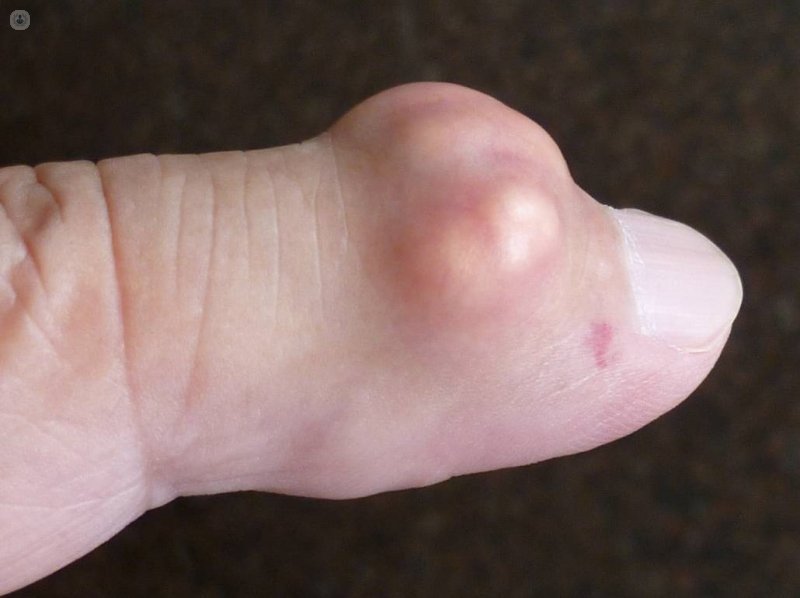Drop: causes, symptoms, diagnosis and treatment
Written by:Gout attacks consist of episodes of joint inflammation very sharp and painful. This inflammation is due to the presence of salt crystals of uric acid within the joint.
Crystals form especially in joints and tendons resulting from elevated levels of uric acid in the blood (hyperuricemia), which frequently relate to excessive dietary habits and alcohol consumption - especially if excessive beer -. About 7% of men have high levels of uric acid in the blood, but only a percentage lower urate crystals form and suffers drop. Meanwhile, women of childbearing age and during menopause can raise uric acid levels, but without reaching the men and drop them is much less frequent - although it can occur in women after menopause, especially if they take diuretics -.

Causes of the occurrence of gout
Excessive, besides being able to produce what has been called metabolic syndrome (obesity, hypertension, diabetes, high cholesterol and blood lipids), eating habits increase blood uric acid (hyperuricemia) and are the most common cause of hyperuricemia and gout. Never drop is due to the intake of one or a few foods. Taking diuretics, renal failure and, rarely, other diseases or genetic predisposition, also produce cause hyperuricemia and gout. Sometimes it is associated with decreased kidney function in which case it is particularly suitable to treat it.
The accumulation of urate crystals and gout attacks
The accumulation of urate crystals before the first attack of gout, which may take time to reach. Mainly, gout is manifested by acute inflammation produce intense articulate, almost always it uses single joint, which goes from an asymptomatic inflammation to swell intensely. After ignition, the joint becomes swollen and its surface may become red, causing intense pain. The most common areas where gout appears are the base of the big toe, instep, ankle, knee, wrist, or any joint of the fingers.
An accurate and precise diagnosis
Identifying crystals in joint fluid allow an accurate diagnosis. Diagnosis based on the clinical features of the disease and the presence of elevated levels of uric acid in the blood is uncertain. X-ray or MRI can not diagnose gout.
Consequences drop
In addition to attacks that can be very painful and temporarily disabling (usually more frequent and intense as time passes if the drop is not) can belatedly damaged joints or nearby lymph appear to some joints called tophi. The most disturbing consequence is that the drop increases the risk of cardiovascular disease - such as heart attacks and other complications of atherosclerosis. Recently, it has been associated with impotence which is often vascular origin.
Disease Treatment
Gout is a disease with a very effective treatment and is curable, as the deposition of crystals is reversible by reducing uric acid levels to normal levels. The attacks are usually easily treatable.


